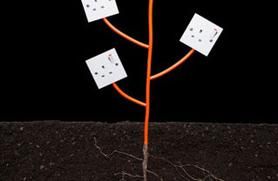As we head into winter, most people have their eye on how to monitor and maintain an energy efficient home. A home energy audit may reveal a whole lot of places electricity can be conserved, but how can you track improvements? One of the easiest ways to do this is with a home energy monitor. But with the wide selection out there, it can be touch figuring out which option is right for you. We're here to help you understand what kind of monitoring you'd like to do, and what gear is available to you to get the savings you want to achieve.
Advertisement
